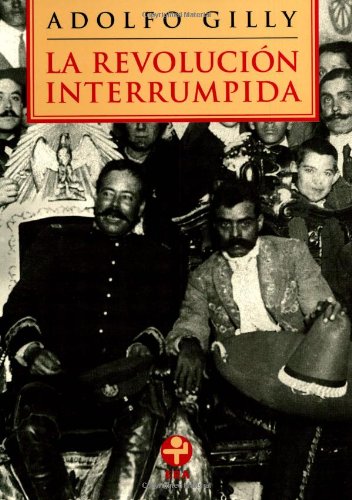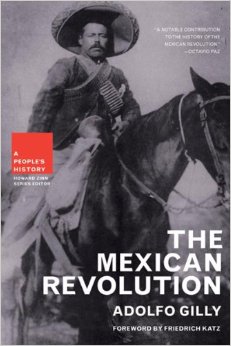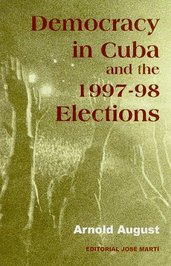Sugar production was integrally tied to African slavery. “Immense legions of slaves came from Africa in order to provide for King Sugar the numerous and free work force that he demanded: human fuel to burn” (Galeano 2004:83; 1997:59).
Slavery and slave labor provided benefits beyond sugar production. “According to Sergio Bajú, the most formidable engine of European mercantilist capital accumulation was American slavery; at the same time, that capital became ‘the foundation upon which was constructed the giant industrial capital of contemporary times.’ The resurrection of Greco-Roman slavery in the New World had miraculous properties: the slaves that crossed the Atlantic multiplied the ships, the factories, the railroads, and the banks of the countries from which they did not originate and to which, with the exception of the United States, they were not destined. Between the dawn of the sixteenth century and the agony of the nineteenth century, several millions of Africans, it is not known how many, crossed the ocean…. From the Potomac to Rio de la Plata, the slaves constructed the houses of their masters, cut down the forests, cut and ground the sugar cane, planted cotton, cultivated cocoa, harvested coffee and tobacco, and dredged the river beds in search of gold” (Galeano 2004:107-8).
Slavery promoted the economic development of the Northeastern United States, even though the region did not utilize slave labor as a systemic pattern. By the eighteenth century, the Caribbean islands had developed extensive sugar plantations utilizing African slave labor to produce sugar for export to Western Europe. To maximize profit, it was rational to utilize the plantation exclusively for the production of sugar and to purchase food, rather than cultivate it. Thus the slave production of sugar in the Caribbean generated a market for food products. North American farmers, given their medium-sized farms and their proximity to the Caribbean, were strategically located to respond to this market demand. The sale of food and animal products to the Caribbean turned out to be a very lucrative market for the North American farmers. Through this trade, the North American farmers accumulated capital, which was converted into industrial development during the nineteenth century, taking advantage of new possibilities emerging form the peripheralization of the South from 1800 to 1860. During this period of 1800-1860, the slave production of cotton, tobacco, sugar and rice in the South provided cheap raw materials as well as a market for the new and expanding industries of the Northeast, thereby creating possibilities for the industrial and economic development of the Northeast. Thus, although the northeastern farmers did not themselves utilize slaves as an integral and significant part of their production, they economically benefited from slavery in the Caribbean and in the US South through core-peripheral commerce with these slave regions (Frank 1979:64-68; Shannon 1996:64; Pérez 1995:70-71; Galeano 2004:87; Genovese 1967; Williams 1996:108-18). Since northeastern manufacturing was central to the economic development of the nation during the nineteenth and twentieth centuries, we are recognizing here the importance of slavery in the economic development of the United States.
The ascent of the United States was spectacular. Merely a semi-peripheral nation in the late eighteenth century, during the nineteenth and twentieth centuries it ascended to become the hegemonic core power of the neocolonial world system. No other nation could possibly repeat such an ascent, without finding an equally lucrative commercial relation with a system of forced labor, similar to the relations with systems of slave labor in the Caribbean and the US South, exploited by the North American British colonies and the northeastern region of the United States during the eighteenth and nineteenth centuries. The ascent of the United States is a theme that we will discuss in future posts.
The slaves did not passively accept their condition. In addition to the Haitian Revolution, there were constant slave rebellions in the Caribbean islands. In addition, slaves escaped to form their own communities in the mountains. And they developed a cultural resistance, affirming their identity through religious ceremonies, dances, and magic (Galeano 2004:112-16). This spirit of rebellion of African-Americans would emerge as an integral component of the social movements of the twentieth century.
References
Frank, Andre Gunder. 1979. Dependent Accumulation and Underdevelopment. New York: Monthly Review Press.
Galeano, Eduardo. 1997. The Open Veins of Latin America: Five centuries of the pillage of a continent, 25th Anniversary Edition. Translated by Cedric Belfrage. Forward by Isabel Allende. New York: Monthly Review Press.
__________. 2004. Las Venas Abiertas de América Latina, tercera edición, revisada. México: Siglo XXI Editores.
Genovese, Eugene D. 1967. The Political Economy of Slavery. New York: Random House, Vintage Books.
Pérez, Jr., Louis A. 2006. Cuba: Between Reform and Revolution, 3rd edition. New York: Oxford University Press.
Shannon, Thomas Richard. 1996. An Introduction to the World-System Perspective, 2nd ed. Boulder: Westview Press.
Williams, Eric. 1966 (1944). Capitalism & Slavery. New York: G.P. Putnam’s Sons, Capricorn Books.
Key words: Third World, revolution, colonialism, neocolonialism, imperialism, democracy, national liberation, sovereignty, self-determination, independence, socialism, Marxism, Leninism, Cuba, Latin America, world-system, world-economy, development, underdevelopment, capitalism, peripheralization, slavery
Slavery and slave labor provided benefits beyond sugar production. “According to Sergio Bajú, the most formidable engine of European mercantilist capital accumulation was American slavery; at the same time, that capital became ‘the foundation upon which was constructed the giant industrial capital of contemporary times.’ The resurrection of Greco-Roman slavery in the New World had miraculous properties: the slaves that crossed the Atlantic multiplied the ships, the factories, the railroads, and the banks of the countries from which they did not originate and to which, with the exception of the United States, they were not destined. Between the dawn of the sixteenth century and the agony of the nineteenth century, several millions of Africans, it is not known how many, crossed the ocean…. From the Potomac to Rio de la Plata, the slaves constructed the houses of their masters, cut down the forests, cut and ground the sugar cane, planted cotton, cultivated cocoa, harvested coffee and tobacco, and dredged the river beds in search of gold” (Galeano 2004:107-8).
Slavery promoted the economic development of the Northeastern United States, even though the region did not utilize slave labor as a systemic pattern. By the eighteenth century, the Caribbean islands had developed extensive sugar plantations utilizing African slave labor to produce sugar for export to Western Europe. To maximize profit, it was rational to utilize the plantation exclusively for the production of sugar and to purchase food, rather than cultivate it. Thus the slave production of sugar in the Caribbean generated a market for food products. North American farmers, given their medium-sized farms and their proximity to the Caribbean, were strategically located to respond to this market demand. The sale of food and animal products to the Caribbean turned out to be a very lucrative market for the North American farmers. Through this trade, the North American farmers accumulated capital, which was converted into industrial development during the nineteenth century, taking advantage of new possibilities emerging form the peripheralization of the South from 1800 to 1860. During this period of 1800-1860, the slave production of cotton, tobacco, sugar and rice in the South provided cheap raw materials as well as a market for the new and expanding industries of the Northeast, thereby creating possibilities for the industrial and economic development of the Northeast. Thus, although the northeastern farmers did not themselves utilize slaves as an integral and significant part of their production, they economically benefited from slavery in the Caribbean and in the US South through core-peripheral commerce with these slave regions (Frank 1979:64-68; Shannon 1996:64; Pérez 1995:70-71; Galeano 2004:87; Genovese 1967; Williams 1996:108-18). Since northeastern manufacturing was central to the economic development of the nation during the nineteenth and twentieth centuries, we are recognizing here the importance of slavery in the economic development of the United States.
The ascent of the United States was spectacular. Merely a semi-peripheral nation in the late eighteenth century, during the nineteenth and twentieth centuries it ascended to become the hegemonic core power of the neocolonial world system. No other nation could possibly repeat such an ascent, without finding an equally lucrative commercial relation with a system of forced labor, similar to the relations with systems of slave labor in the Caribbean and the US South, exploited by the North American British colonies and the northeastern region of the United States during the eighteenth and nineteenth centuries. The ascent of the United States is a theme that we will discuss in future posts.
The slaves did not passively accept their condition. In addition to the Haitian Revolution, there were constant slave rebellions in the Caribbean islands. In addition, slaves escaped to form their own communities in the mountains. And they developed a cultural resistance, affirming their identity through religious ceremonies, dances, and magic (Galeano 2004:112-16). This spirit of rebellion of African-Americans would emerge as an integral component of the social movements of the twentieth century.
References
Frank, Andre Gunder. 1979. Dependent Accumulation and Underdevelopment. New York: Monthly Review Press.
Galeano, Eduardo. 1997. The Open Veins of Latin America: Five centuries of the pillage of a continent, 25th Anniversary Edition. Translated by Cedric Belfrage. Forward by Isabel Allende. New York: Monthly Review Press.
__________. 2004. Las Venas Abiertas de América Latina, tercera edición, revisada. México: Siglo XXI Editores.
Genovese, Eugene D. 1967. The Political Economy of Slavery. New York: Random House, Vintage Books.
Pérez, Jr., Louis A. 2006. Cuba: Between Reform and Revolution, 3rd edition. New York: Oxford University Press.
Shannon, Thomas Richard. 1996. An Introduction to the World-System Perspective, 2nd ed. Boulder: Westview Press.
Williams, Eric. 1966 (1944). Capitalism & Slavery. New York: G.P. Putnam’s Sons, Capricorn Books.
Key words: Third World, revolution, colonialism, neocolonialism, imperialism, democracy, national liberation, sovereignty, self-determination, independence, socialism, Marxism, Leninism, Cuba, Latin America, world-system, world-economy, development, underdevelopment, capitalism, peripheralization, slavery


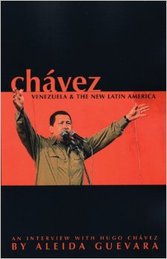
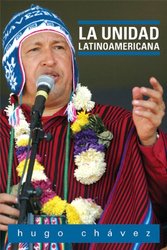

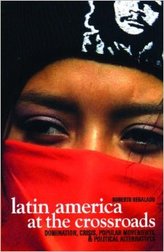


 RSS Feed
RSS Feed